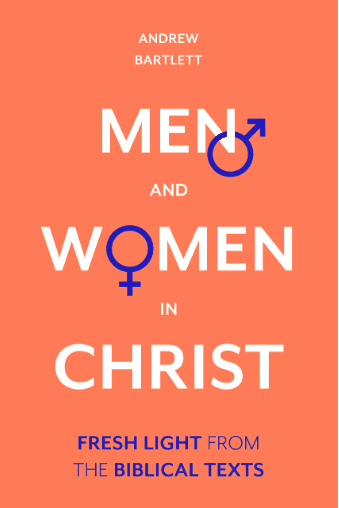 Andrew Bartlett, in his new book Men and Women in Christ (MWiC), asks if marriages depict Christ.
Andrew Bartlett, in his new book Men and Women in Christ (MWiC), asks if marriages depict Christ.
This was the only driving theme of a book by John Piper, who has influenced this conversation as much as Grudem, but for some reason Bartlett never takes up interaction with Piper.
Anyway, here are Bartlett’s conclusions, some of which lean a little more complementarian and others a little more egalitarian:
1. The only marriage at the completion of the new creation will be the union between Christ and his people. In Ephesians 5 Paul teaches that marriage in the present age is to be seen as a pointer to that reality. The way that husbands and wives relate to each other is to be understood as part of the outcome of being filled by the Holy Spirit so as to live a Christlike way of life.
This next point is quite significant though Bartlett doesn’t dramatize it. What does “head” evoke in its metaphor? Commonly for complementarians, it is “lordship.” Bartlett says No.
2. Paul uses a ‘head’ metaphor to describe both Christ’s relation to the church and the husband’s calling in marriage. In Greek this was not a standardized metaphor with a single meaning, so its meaning has to be determined from the context. In Ephesians 1:21-23 the focus is probably on Christ’s lordship and in 4:13—16 it is on Christ’s saviourhood. Four features show that it is the latter meaning which Paul applies to the husband. These are (a) Paul’s apposition of ‘head of the church’ and ‘himself saviour of the body’ in 5:23; (b) Paul’s theme of saviourhood in 5:25—33; (c) his use of Genesis in 5:31—32; and (d) the first word of 5:24 {alia, ‘but’), which can only be explained in a way that fits the context if Paul is comparing the husband with Christ as saviour rather than as lord.
I consider this point crucial to comprehending Paul’s teachig.
3. The meaning of the husband’s headship, as shown by the head-body metaphor and the Christ-church comparison, is that he has a particular obligation of loving self-sacrifice for the benefit of his wife. If the husband has any crown, it is a crown of thorns.
I question using the following language, which is all but turned around by the end of the paragraph.
4. Wives are to behave as if their husbands were their masters. This does not mean that husbands are masters of their wives. The reasons given by Paul for the wife’s submission are the example of and reverence for Christ (w. 1-2, 21-22) and the husband’s responsibility of self-sacrificial service (w. 22-23). He does not give a reason based on a God-given unilateral authority of the husband.
5. The submission which Paul instructs in verse 21 is a voluntary, mutual submission of believers to one another. Husbands are not exempted from this as regards their wives.
6. In the limited and particular sense explained above, Paul makes a differentiation in the responsibilities of husbands and wives. The egalitarian view which denies any definite differentiation of responsibilities is not consistent with Paul’s use of the head—body metaphor and the Christ—church comparison.
7. Marriages lived according to the model of Ephesians 5 are capable of being a wonderful demonstration of the humility of Jesus Christ and his sacrificial love for his church.
8. Paul appears to envisage joint leadership of the household and is not prescriptive about the balance of men’s and women’s responsibilities for the family.











